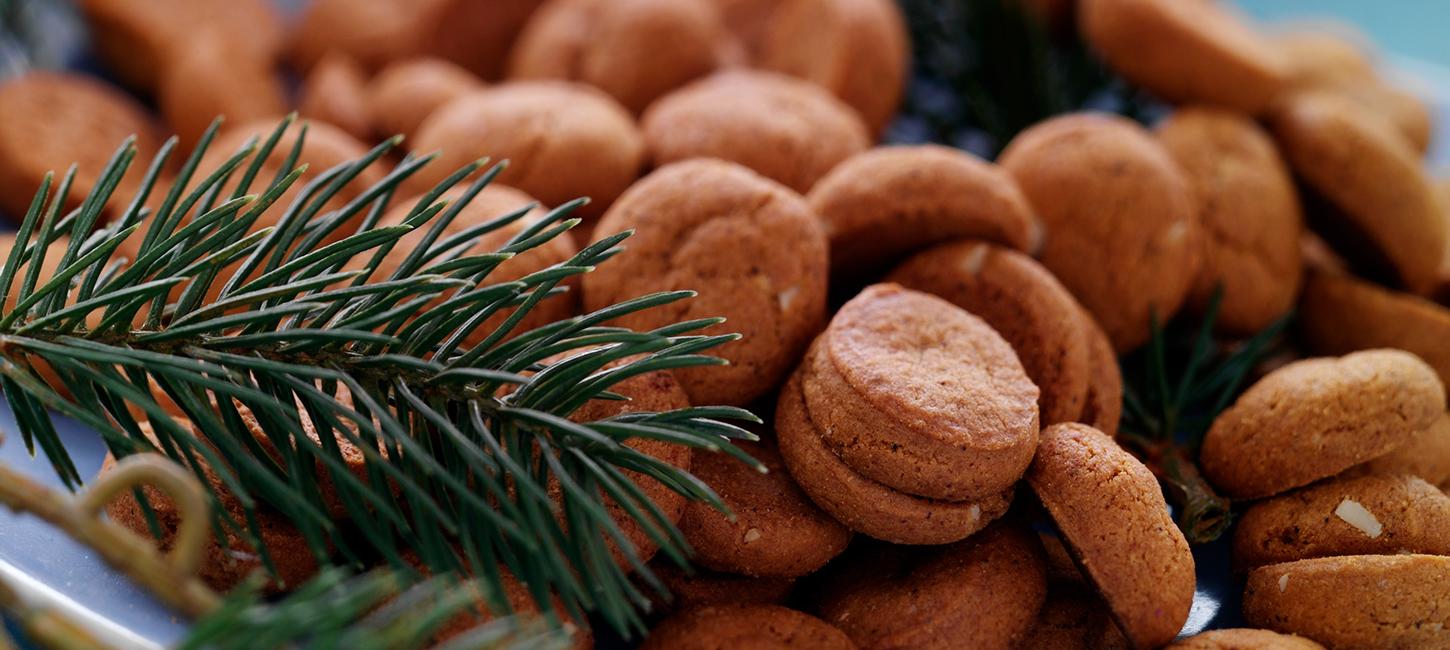
Danish Christmas Bisquits
Christmas in the old royal town is the celebration of the King's presence in his residence town Nyborg - Denmark's first capital. When the King was in town, something extra was always made out of food and drink.
When the King was in town, something extra was always made out of food and drink. Food and drink poured in from all of King's Fadeburslen, which covered large parts of Funen. Whether the King was going to use beer, bargains, fruit or bread, the region's producers were ready with the best there was. And when it came to the King, exotic ingredients, spices, etc. were often used. which only the King could afford to import from distant lands.
A medieval cake could be the gingerbread or the gingerbread. Today there is a wealth of recipes on the internet, but common to all of them is that "pebernødder" could be a Christmas tradition at the King's court in the old royal city of Nyborg:
Gingerbread is an old kind of cookie known today as the Christmas tradition of brownies, gingerbread and gingerbread. These are among today's Danish food products that can be traced back to time. The gingerbread can at least date to the end of the 1400s. Historically, the ingredients have also been the same - the difference between these Christmas goodies primarily consists in the design.
Pepper previously meant not only getting pepper in the food, but seasoning altogether (and giving it a pungent taste). Therefore, the old name gingerbread is not just reserved for cakes with pepper in; it is a more general term for large and small, angular and round (as well as figurative) cakes, baked by a dough of wheat or rye flour, sweetened with honey or syrup, and added spices such as ginger, cinnamon, cloves, and cardamom.
In fact, pepper was an extremely rare ingredient. "It's just pebernødder," we say, when it comes to small money only, and when something is expensive, we talk about "a pricey price." Pepper was expensive in the Middle Ages. In addition to giving flavor to the cakes, the spices had the advantage of extending the shelf life of the food, and thus the cakes in crushed condition could serve as a spice blend in other dishes.
Pebernødder
While gingerbread was something you baked all year, the gingerbread has always been exclusively associated with Christmas. It is uncertain when the term began to come into play as part of the Danish language, but it probably happened at the beginning of the 18th century. At that time, the Danish culture was strongly influenced by the German, and the name of the pepper nuts derives from the German Pfeffernüssen.
The fact that they were compared to nuts was due, of course, to their similar color and size, but also to the fact that they were baked at that time without any form of raising agent, which made them extremely hard. They were usually baked to finish the bread baking, in the aftermath of the large baking oven.
"Pebernødder" are both delicious cookies to eat, but are also used as currency in many Christmas games. "Pebernødder" also fit in the conifer houses on the Christmas tree: "first the tree must appear, then it must be eaten", as the old Christmas song "High for the tree green top" claims.
(Source: Wikipedia)